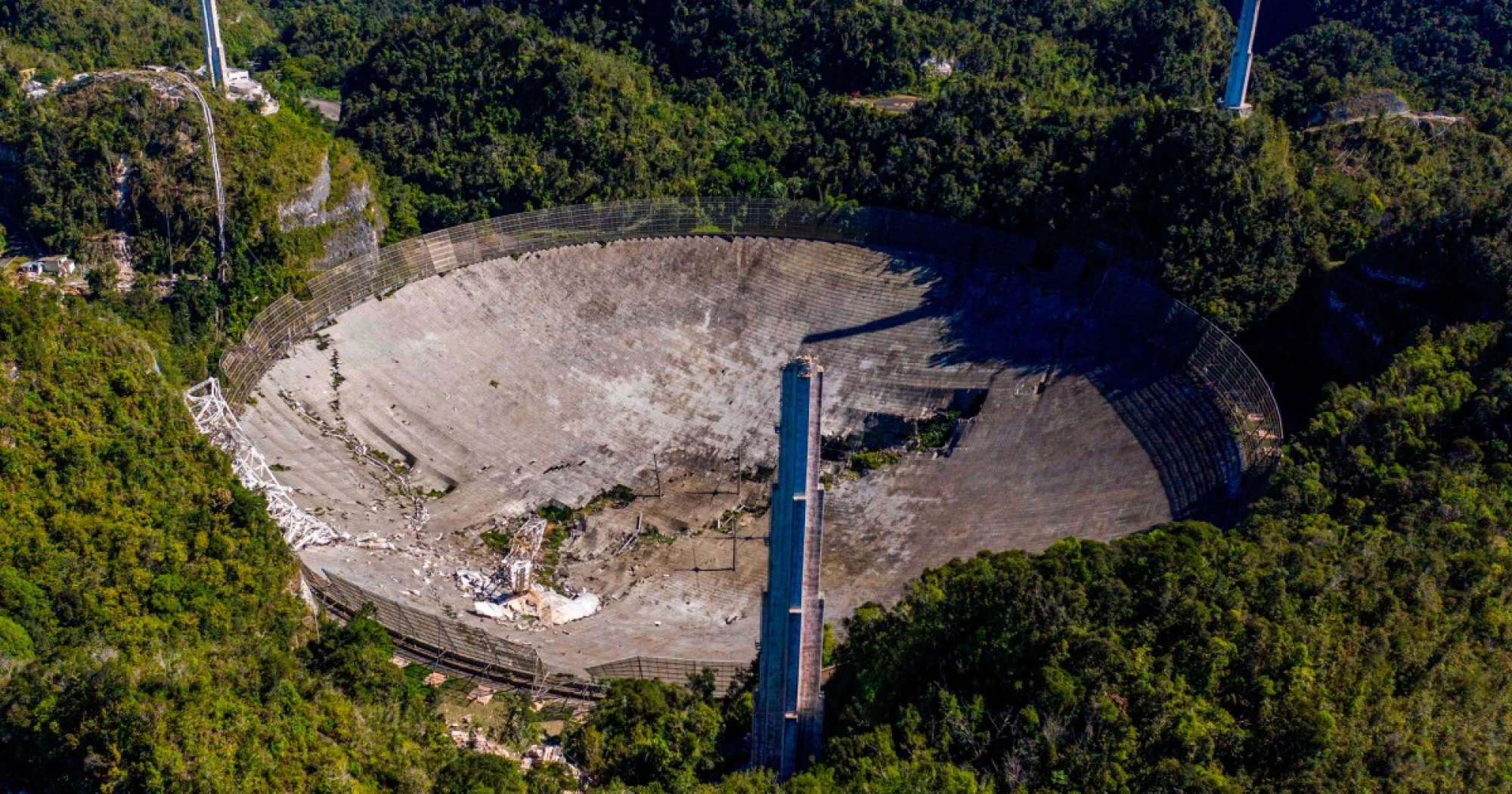Unprecedented failure led to the collapse of the world-renowned radio telescope in Puerto Rico, report shows

The iconic Arecibo Observatory telescope collapsed due to the decay of the zinc-filled sockets supporting the steel cables holding up the telescope’s 900-ton receiver platform.
Four years after the radio telescope at the Arecibo Observatory in Puerto Rico collapsed, a report from the National Academies of Sciences, Engineering and Medicine is shining a light on the unprecedented failures that caused its destruction.
The steel cables holding up the telescope’s 900-ton receiver platform became loose because the zinc-filled sockets built to support them failed, according to the report published Oct. 25.
The failure was due to excessive “zinc creep,” a process in which the metal used to prevent corrosion or rusting on the sockets deforms and loses it grip over time, the report said.
The zinc gradually lost its hold on the cables suspending the telescope’s main platform over the reflector dish. This allowed several cables to pull out of the sockets, ultimately causing the platform to plummet into the reflector more than 400 feet below, according to the report.
This kind of failure "had never been reported previously in over a century of widespread zinc spelter socket successful use," Roger L. McCarthy, chair of the committee on the analysis of causes of failure and collapse of the 305-meter telescope at the Arecibo Observatory, wrote in the report.
Rating: 5